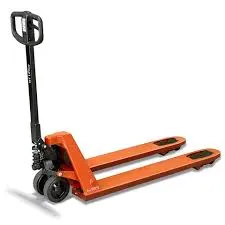


Designing an Effective Chain Hoist Key Considerations
Chain hoists are essential tools in various industries, from construction to manufacturing, providing a reliable means of lifting and moving heavy loads. The design of a chain hoist must consider several factors to ensure efficiency, safety, and longevity.
1. Load Capacity The first step in designing a chain hoist is determining its load capacity. This involves assessing the maximum weight the hoist will need to lift. Typical residential and industrial hoists vary widely in capacity, from small units lifting hundreds of pounds to large models capable of moving several tons. Designing for an adequate safety margin—at least 25% beyond the maximum load—is crucial to prevent accidents and equipment failure.
2. Drive Mechanism Chain hoists operate through various drive mechanisms, including manual, electric, and pneumatic systems. Manual hoists, operated by hand cranks, are cost-effective and suited for lighter loads. Conversely, electric hoists offer speed and ease for heavy lifting, making them favorable in industrial settings. The choice of drive mechanism should align with the intended operational environment, load frequency, and speed requirements.
3. Chain Design The chain used in a hoist is a critical component, influencing its strength and durability. High-quality, heat-treated steel chains provide strength while maintaining lightweight characteristics. Additionally, the pitch of the chain must be compatible with the hoist design to ensure smooth operation. Regular maintenance, including lubrication and inspection, is essential to prevent wear and ensure safety during operation.

4. Safety Features Safety must be a priority in any chain hoist design. Incorporating features like load limiters, emergency stop buttons, and automatic brake systems can significantly enhance user safety. Additionally, the design should facilitate easy access for maintenance and inspections, helping to ensure ongoing safety and performance.
5. Portability and Maneuverability Designing for portability can be beneficial, particularly in scenarios requiring frequent relocation of the hoist. Features like lightweight materials, sturdy wheels, and compact designs allow for easy transport without compromising structural integrity.
6. Compliance and Standards Finally, adhering to industry standards and regulations is critical in chain hoist design. Compliance with organizations such as the American National Standards Institute (ANSI) or the Occupational Safety and Health Administration (OSHA) can help ensure that the hoist is safe for use.
In conclusion, a well-designed chain hoist is a complex blend of capacity, mechanism, safety features, and compliance with standards. By carefully considering these aspects during the design phase, manufacturers can create reliable and efficient hoists that meet the diverse needs of various industries, ultimately contributing to safer and more productive work environments.



